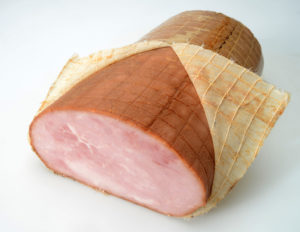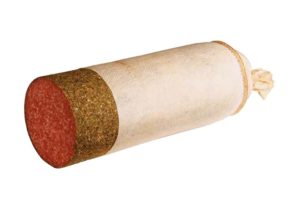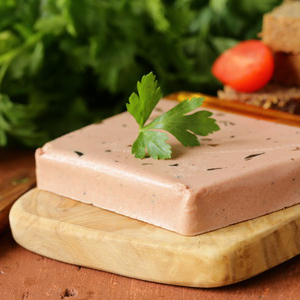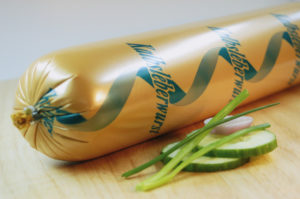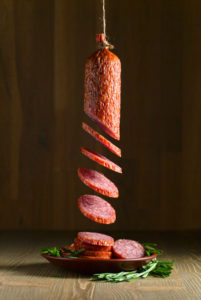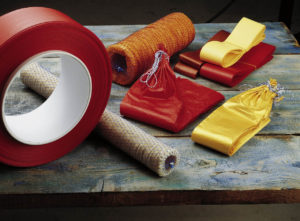
Walsroder F plus couples the benefits of fibrous casings, such as satin-matt surface and excellent shrink capability, with the superb barrier and meat cling properties associated with plastic casings. Walsroder F plus has a highly effective barrier coating on the inside. It is highly impermeable to water vapour, oxygen and aromas as well as being greaseproof. Outstanding features such as its good handling texture and machinability make the casing equally attractive to the butcher’s trade and the meat processing industry.
Applications:
Walsroder F plus is ideal for cooked and scalded varieties of sausage produced without smoke treatment. Their colour and quality are reliably retained by Walsroder F plus.
A major plus factor at the point of sale is the natural appearance and long shelf life of the finished sausage products. Sausages in Walsroder F plus remain fresh and retain their flavour. Stored properly, the sausages will have a shelf life of several weeks without losing any of the quality.
With its excellent shrink performance – highly appreciated by experts in the trade – Walsroder F plus ensures that sausages keep their tightly stuffed exterior. The casing encloses the sausage product skin-tight and wrinkle-free, providing excellent meat cling.
Walsroder F plus can be filled exactly to the recommended stuffed diameter – meeting the prerequisites for packaging halved or portioned sausages for retailing in self-service outlets.
The Glossy Barrier-Coated Alternative
Walsroder FVP is a fibrous casing with an outside barrier coating which, coupled with the natural surface, gives the sausage its glossy appearance. The barrier coating ensures that the sausages have a dependable shelf life and that the interior fibrous layer of the casing remains constantly moist. In practical terms, this boils down to: no shrinking, no bursting, no smoke treatment. When the sausage is finally cut, the cooked emulsion will not ooze out- in other words: it’s the ideal casing for all varieties of liver sausage.
Applications:
Walsroder FVP is the perfect choice for unsmoked cooked or scalded sausages, cooked cured meat products and cooked sectioned-and-formed meat products, including poultry items. It’s the ideal casing for all varieties of liver sausage.
Walsroder FVP is virtually impermeable to water vapour, oxygen and aromas as well as being greaseproof. The sausages obtain a glossy exterior and remain fresh for a very long time. In addition, sausages produced in Walsroder FVP are suitable for deep-freezing. Walsroder FVP can be filled to the specified diameter trouble-free: With the appropriate stuffing pressure, the sausages will obtain their fully rounded contours.
Additionally, the Walsroder FVP can now be used to transfer caramel colour and/or smoke flavour to a food product, while remaining in a moisture proof casing. Perfect for meat or cheese applications, this new development saves the need for messy and costly applications of caramel colour or liquid smoke. Product yields can also be maximized with the moisture proof FVP casing, compared to a traditional fibrous or collagen casing. Our technical team is available to discuss the latest treatments/coatings for your applications.

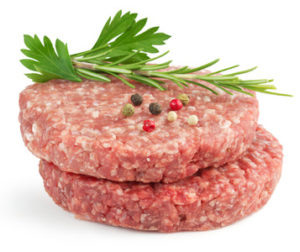
 MMIS Mondo
MMIS Mondo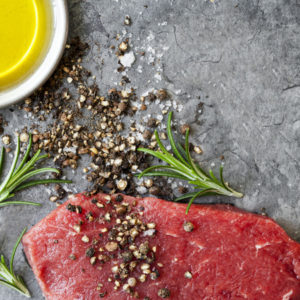
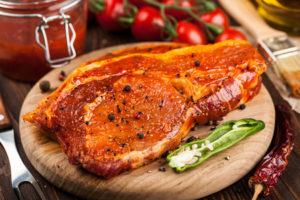
 MMIS Mondo
MMIS Mondo